
| Light Brown Apple Moth (LBAM) (formerly known as Teras postvittana) ARCHIPINI, TORTRICINAE, TORTRICIDAE, TORTRICOIDEA | (donherbisonevans@yahoo.com) and Stella Crossley |
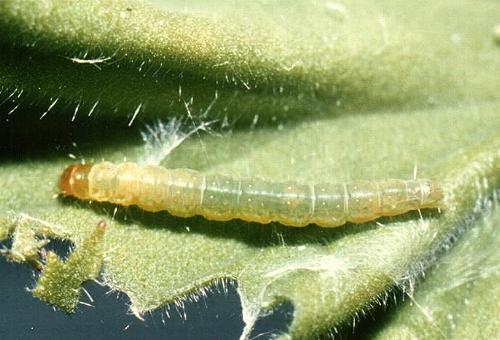
(Photo: Don Herbison-Evans, Sydney, New South Wales)

| Light Brown Apple Moth (LBAM) (formerly known as Teras postvittana) ARCHIPINI, TORTRICINAE, TORTRICIDAE, TORTRICOIDEA | (donherbisonevans@yahoo.com) and Stella Crossley |

(Photo: Don Herbison-Evans, Sydney, New South Wales)
This Caterpillar is pale green, with thin yellow bands between segments, and a pale brown head. It is a pest in monoculture situations, particularly attacking
One of the worst aspects of an infestation by this caterpillar is that other diseases such as the Mould Botrytis cinerea are transmitted by the caterpillars to the crop.
The caterpillar also attacks a wide variety of other agricultural plants and fruits, including:
as well as various Australian native plants including:
It lives in a shelter created by joining together with silk the young leaves of a growing shoot of its foodplant. If disturbed, the caterpillar wriggles backwards violently, and drops on a silk thread. The caterpillar grows to a length of about 2 cms.

The caterpillar pupates in a cocoon between leaves joined with silk. Pupal duration can be as short as one week.
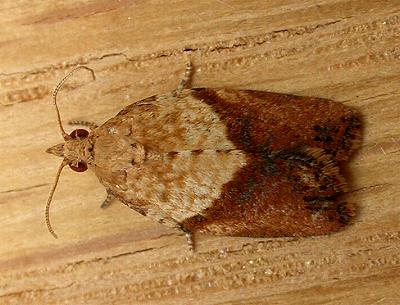
The adult moths have orange brown forewings with variable darker markings in the outer area. The males have a larger dark area than the females, and are also somewhat smaller. The hindwings are light brown.
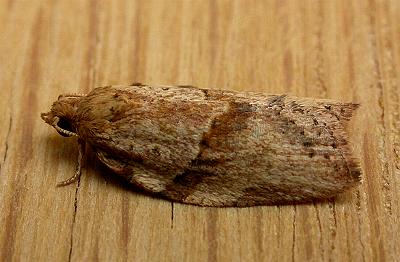
The forewings each have a convex costa. The moths rest with the forewings covering the hindwings, so that their forewings make a shape like the outline of a bell. The moths have a wingspan of about 2 cms.
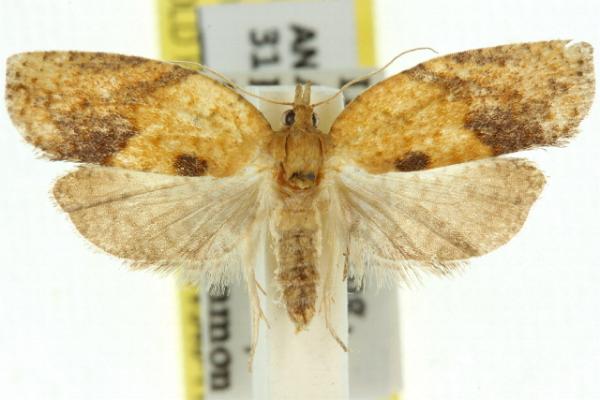
The males find the females by smell, as the females emit pheromones which for this species have been identified.
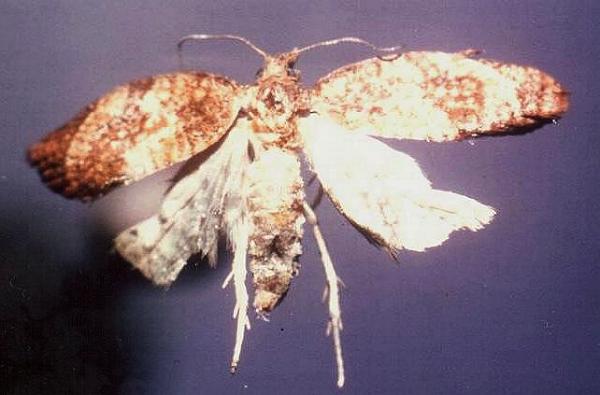
The eggs are pale green and flat, and laid so that they overlap each other to form a smooth surface. This makes for a good camouflage. Each egg has a diameter of about 1 mm. The eggs are usually laid in groups of several dozen on the upper surface of host plant leaves.
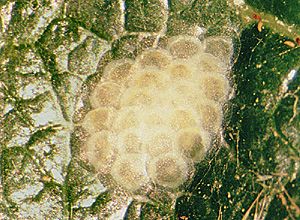
A variety of techniques have been used in an attempt to control the species, including :
The species originated in south-east Australia, but has now spread world-wide, and occurs for example in :
as well as in Australia, including:
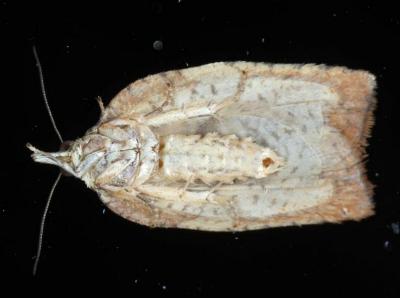
Further reading :
Ian F.B. Common,
Moths of Australia,
Melbourne University Press, 1990, fig. 27.11, pp. 57, 59, 67, 279.
Peter B. McQuillan, Jan A. Forrest, David Keane, & Roger Grund,
Caterpillars, moths, and their plants of Southern Australia,
Butterfly Conservation South Australia Inc., Adelaide (2019), p. 62.
Cate Paull & Andrew D. Austin,
The hymenopteran parasitoids of light brown apple moth,
Epiphyas postvittana (Walker) (Lepidoptera: Tortricidae) in Australia,
Australian Journal of Entomology,
Volume 45, Part 2 (2006), pp. 142-156.
Francis Walker,
Tortricites & Tineites,
List of the Specimens of Lepidopterous Insects in the Collection of the British Museum,
Part 28 (1863), p. 297, No. 59.
 caterpillar |  butterflies |  Lepidoptera |  moths |  caterpillar |
(updated 4 September 2011, 31 January 2025)